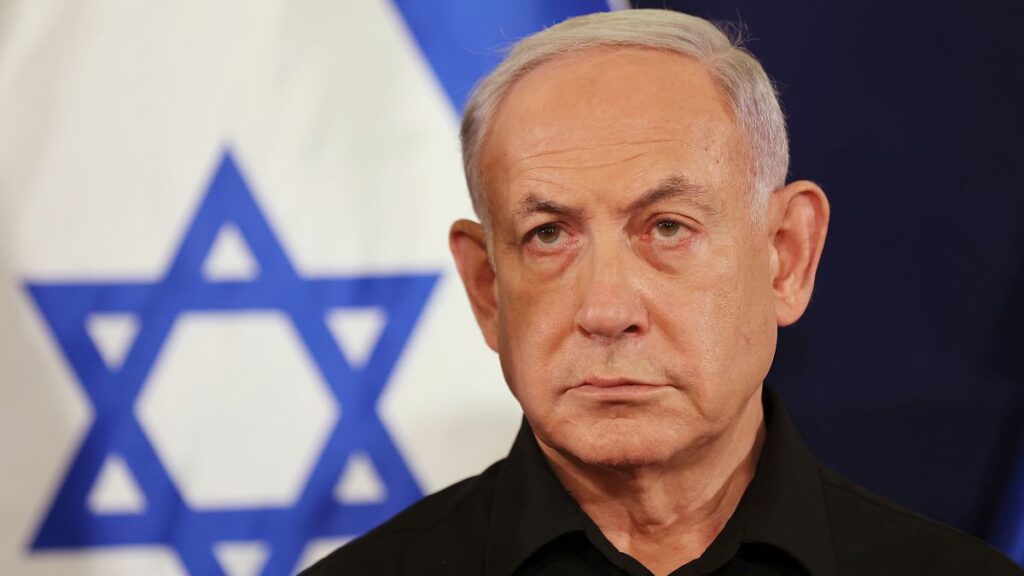The Israeli Prime Minister has unveiled a plan for the post-war period in which he intends to exercise control over security and civil affairs in the Gaza Strip.
Prime Minister Benjamin Netanyahu presented the two-page document to his security cabinet late Thursday for approval.
Deep disagreements over the future of Gaza have led to growing public friction between Israel and the United States, its closest ally. The Biden administration seeks to establish Palestinian governance in Gaza and the Israeli-occupied West Bank as a precursor to a Palestinian state, an outcome vehemently opposed by Mr. Netanyahu and his right-wing government. Mr Netanyahu’s plan calls for hand-picked Palestinians in Gaza to administer the territory.
Benjamin Netanyahu’s vision
Mr. Netanyahu’s plan, while lacking specific details, is the first to lay out a formal vision for the postwar era. He reaffirms that Israel is determined to crush Hamas, the militant group that took control of the Gaza Strip in 2007.
While a majority of Palestinians do not support Hamas, the group is deeply rooted in Palestinian society. Critics, including some in Israel, say the goal of eliminating Hamas is unachievable.
Mr. Netanyahu’s plan provides for freedom of action for the Israeli military in a demilitarized Gaza Strip after the war, in order to thwart any security threats. He predicts that Israel will establish a buffer zone inside Gaza, which will likely provoke objections from the United States.
The plan also calls for the Gaza Strip to be governed by local officials who, according to the plan, “will not be identified with or receive payment from countries or entities that support terrorism.”
It is not certain that Palestinians would agree to play such a subcontractor role. Over the past decades, Israel has repeatedly attempted, unsuccessfully, to establish hand-picked local Palestinian governing bodies.
A plan that does not meet expectations
The Palestinian Authority, which administers parts of the Israeli-occupied West Bank, on Friday denounced Mr Netanyahu’s plan as “colonialist and racist”, saying it would amount to an Israeli reoccupation of the Gaza Strip. Israel withdrew its soldiers and settlers from Gaza in 2005, but retained control of access to the territory.
US Secretary of State Antony Blinken said he had not seen details of the plan. He clarified, however, that any plan should be consistent with the basic principles set out by the United States for the future of the Gaza Strip, “notably the fact that it cannot serve as a platform for terrorism, that there must be no Israeli reoccupation of the Gaza Strip and that the size of the territory of Gaza must not be reduced“.
The Biden administration wants a reformed Palestinian Authority to govern both Gaza and the West Bank, which would be a step toward creating a Palestinian state. She tried to soften Mr. Netanyahu’s resistance by raising the prospect of normalization of relations between Israel and Saudi Arabia, an Arab power, which sets the creation of a Palestinian state as a precondition.
Talks for a new truce
U.S., Israeli, Qatari and Egyptian officials are expected to meet in Paris this weekend to discuss efforts toward a ceasefire. A senior Egyptian official said Egypt and Qatar would bring forward the agreement reached with Hamas leaders, which includes a six-week ceasefire and the release of elderly and sick hostages in exchange for a number of Palestinian prisoners in Israel which remains to be clarified. The official spoke on condition of anonymity because he was not authorized to brief the press.
Hamas demanded a complete halt to the Israeli offensive and a withdrawal of its troops from Gaza in exchange for the release of all its remaining hostages, as well as the release of Palestinians detained by Israel, including high-ranking militants.
Since the start of the war, 29,514 Palestinians have been killed in the Israeli offensive and nearly 70,000 have been injured, the health ministry in the Hamas-ruled Gaza Strip said Friday, a majority of them of women and children.

